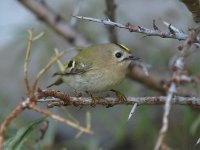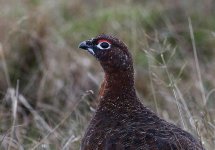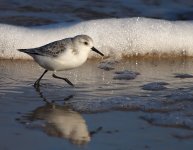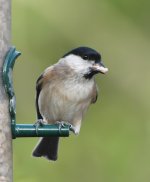SteveClifton
Well-known member
I don't know about the E-620 but, on the assumption that it is similar to the E-30, I would say that it is definitely better than the E-510/520 but not massively so. I can use ISO 800 with reasonable success but wouldn't normally go beyond that. It still lags way behind the latest Canon and Nikon cameras which can use some ridiculously high ISO settings with excellent results.
I am not sure I would upgrade to the current Olympus cameras just for better high ISO performance but would probably wait to see what the next generation is like.
Ron
Hi Ron, I also used to get some very useable images at ISO 800 with my Olympus camera (in my case, as you know, an E-510), and after some recent comparisons I'm not wholly convinced that the competition from Canon and Nikon is streets ahead just yet on this particular issue. I do believe however that Nikon currently have more of an edge than Canon, but there are other variables too that perhaps have more of a bearing on overall final image quality than pure ‘ISO performance’.
Attached are two shots, both taken at ISO 800. The Goldcrest is with my Olympus, and the Grouse is with a Canon 40D. Both have been cropped about the same amount, and a little sharpening has been applied to both in roughly equal measure.
Neither image is perfect, but personally I don't think there is that much to choose between them in terms of noise. They both show some, but it isn't too overpowering IMHO. I have taken better images with the Canon than this; this one was a bit soft out of the camera, and would need even more sharpening to bring it up to the level of the Goldcrest, which was a bit sharper to begin with. Of course, further sharpening would add even more noise to the image in order to make it more 'useable' in terms of sharpness.
The point I'm making here, is that nailing the exposure and focus in the beginning can mean that less pp is necessary in the end, which of course means less image degradation, and that this in itself probably has a greater effect on the final image quality than subtle differences in ISO performance between one camera & another.
For what it’s worth, I do believe that Canon currently does have a slight edge at ISO 400-800 over Olympus, and that Nikon perhaps have a similar slight edge over Canon (though I personally have no experience with Nikon), but these advantages are not so marked as some 'experts' would have us all believe.
In summary, if later Olympus cameras like the E-30 and E-600/620 are even closer to Canon than my E-510, then it’s probably of more benefit at the moment to hone your technique than worry about the ‘deficiencies’ of your camera system of choice.
To confuse matters further, from what I've seen so far the new Canon 7D is less than perfect at similar ISOs to the above, though it is distinctly better at higher settings.
Steve
Attachments
Last edited:









